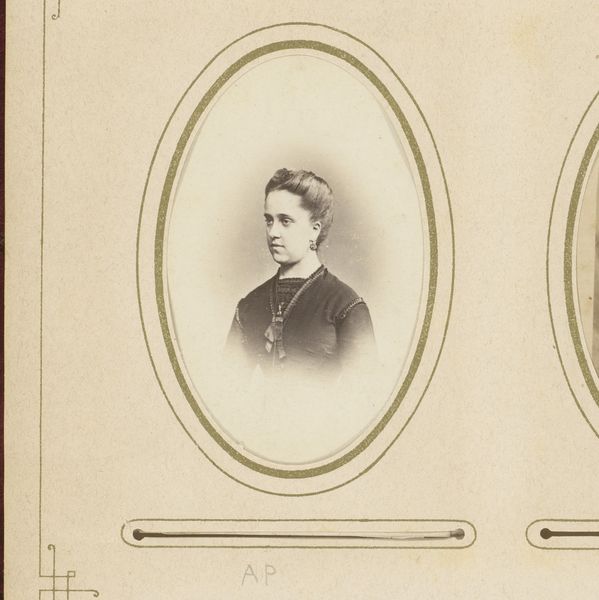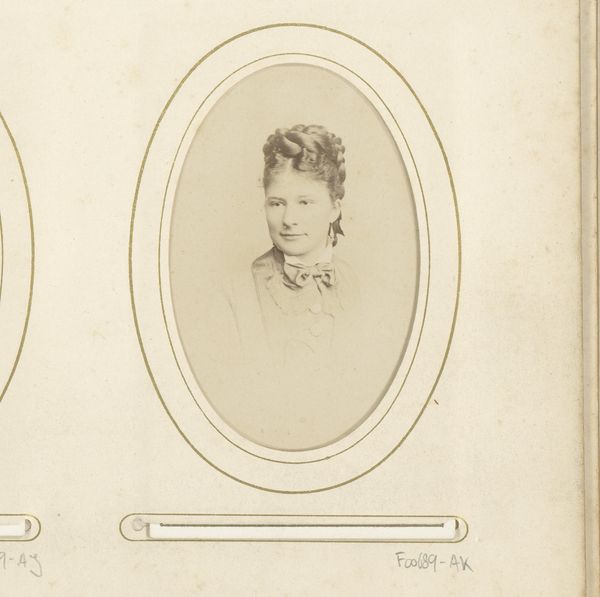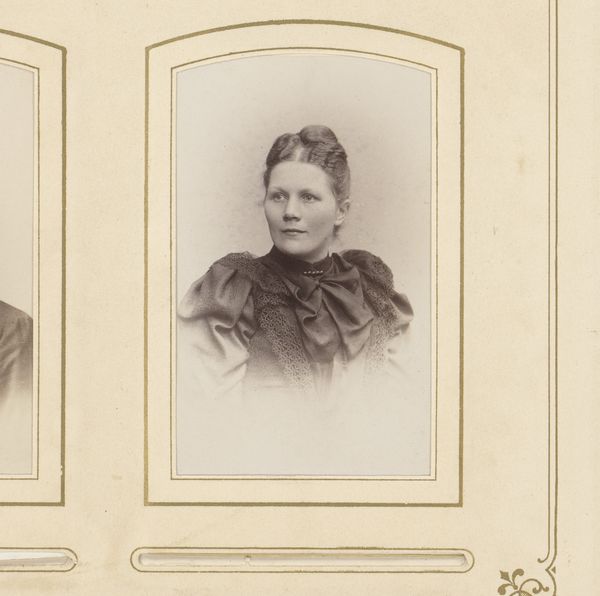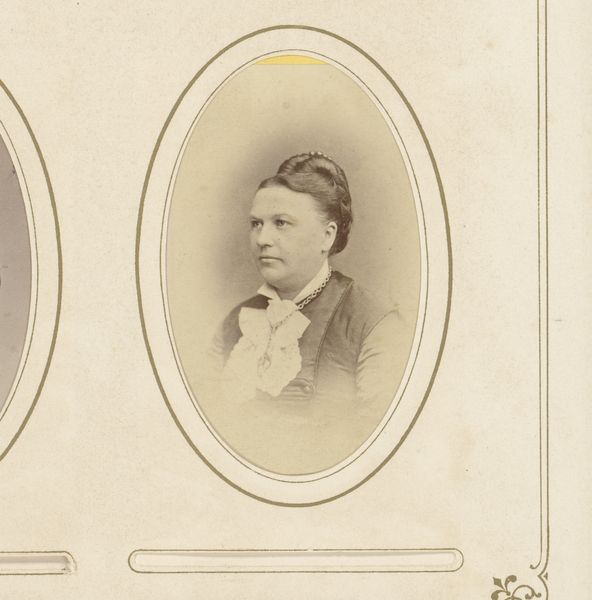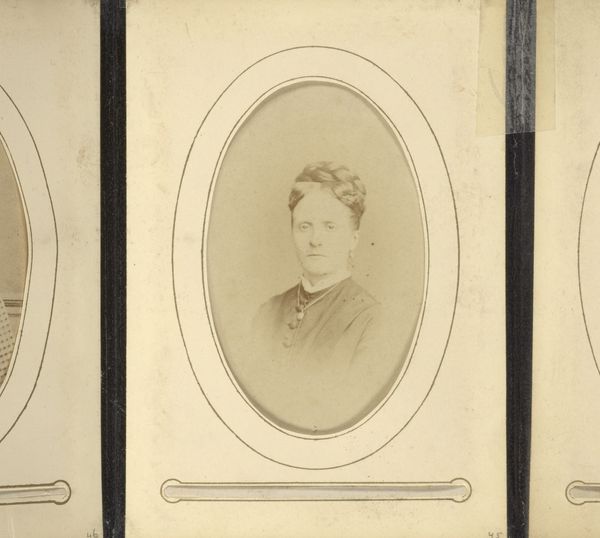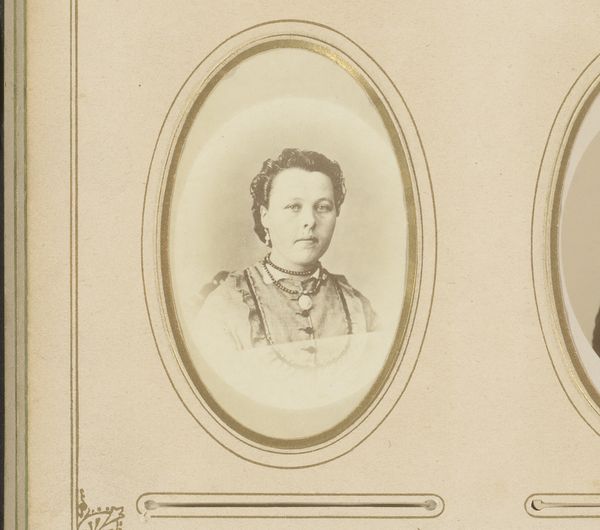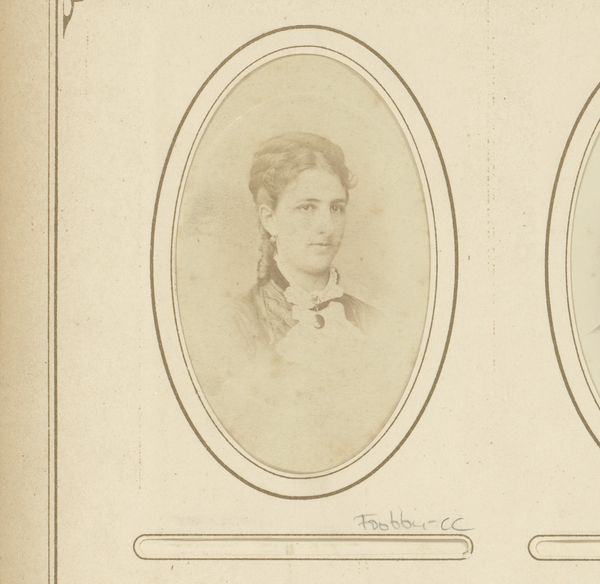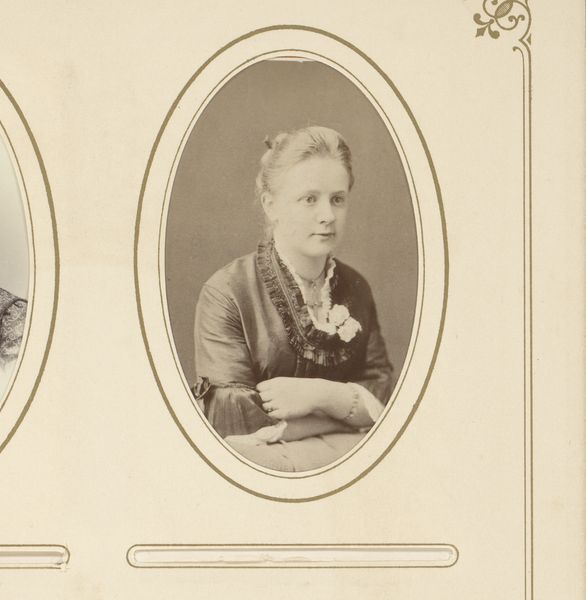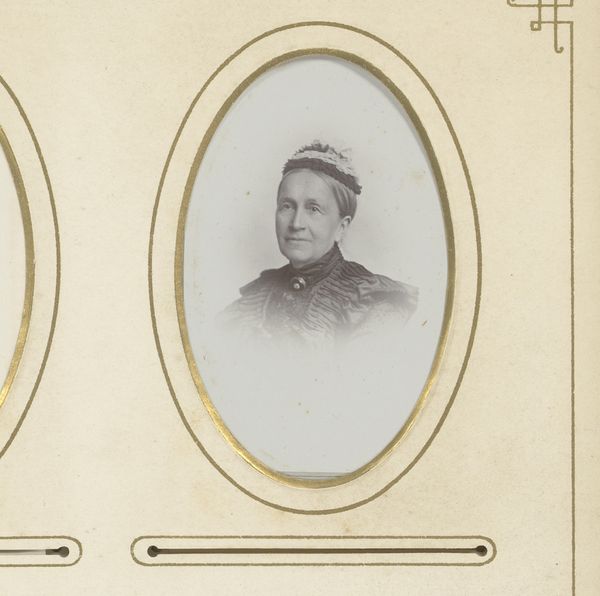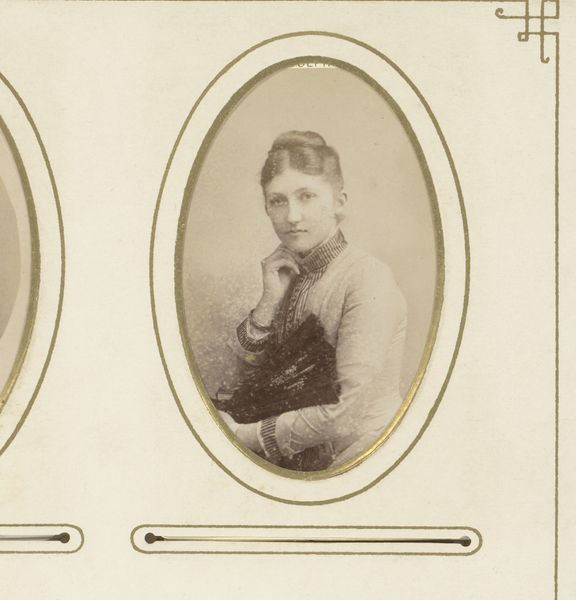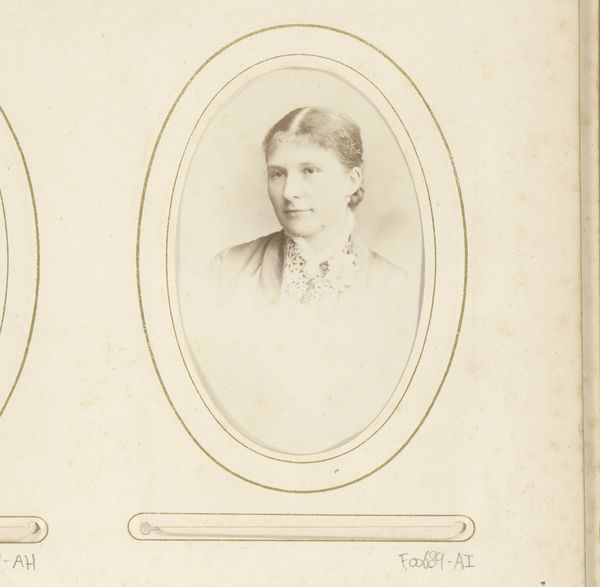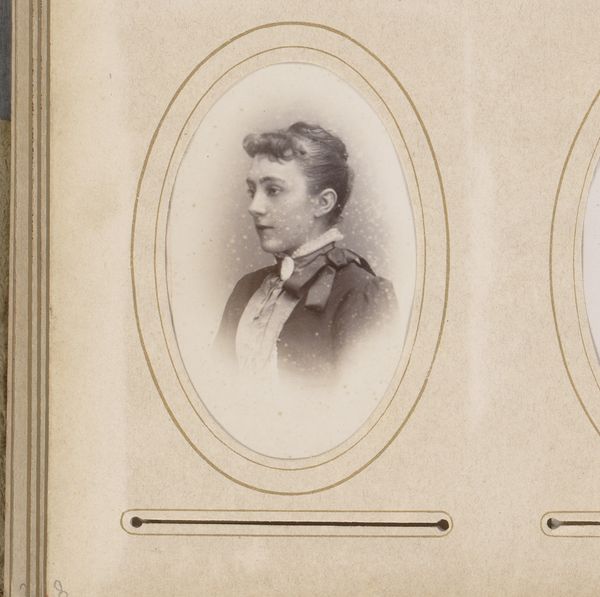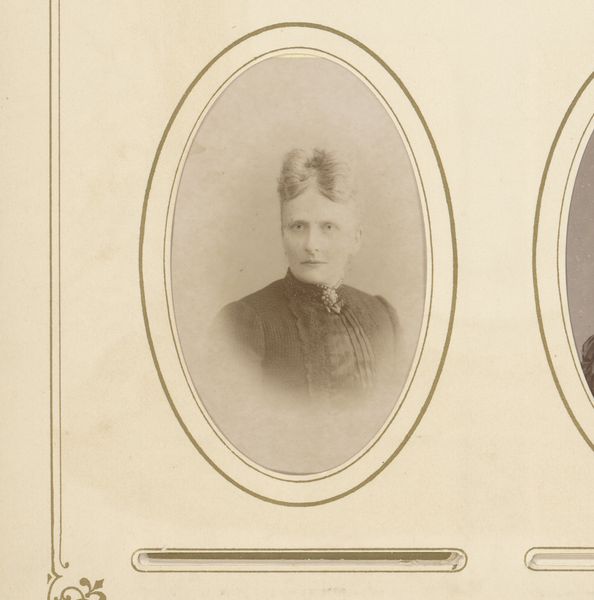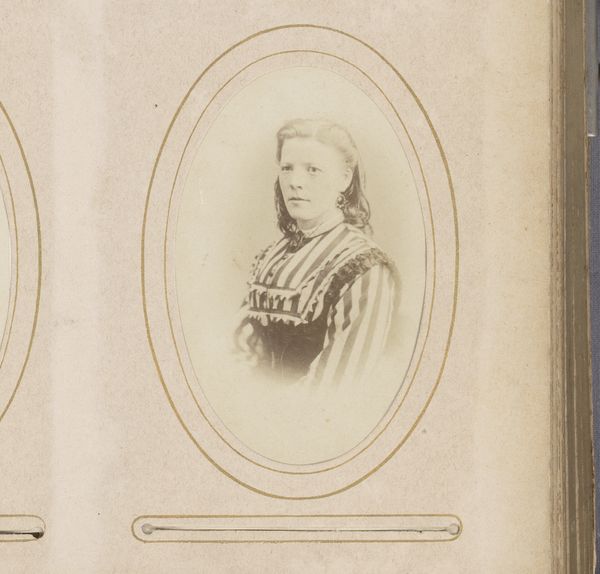
Dimensions: height 87 mm, width 53 mm
Copyright: Rijks Museum: Open Domain
Curator: This is an albumen print titled "Portret van een vrouw", or "Portrait of a Woman," attributed to Johannes Petrus Oppers, dating from 1869 to 1890. It's currently held in the Rijksmuseum collection. Editor: My first thought is that there's such a stark contrast between the crispness of her face and the ethereal softness surrounding it. The framing almost turns it into an object of memory. Curator: Absolutely. And it's crucial to recognize that this form of portraiture wasn’t simply about capturing likeness; it was deeply intertwined with constructing identity and class in the 19th century. Think about the very deliberate pose, the clothing, the accessories...all signifiers within a strict social code. Editor: Precisely. The choice of the albumen print – the process involving coating paper with egg white – adds another layer of complexity. The very material speaks of domesticity, of skilled labor transforming a common substance into a means of preserving an image. You also must acknowledge the process that it involved given this was such a time-consuming, manually laborious approach in pre-mass media photography. Curator: And considering that photography was still quite novel at this time, it allowed for a democratization of portraiture that painting, for example, could not offer. What statements do you believe the photographer made from his decision on background and editing? Editor: I read the background as speaking to some kind of higher status aspiration in the time, with its design seeming much more decorative. I'm interested in what the choice to set the subject against that backdrop suggests about the photographer's own ambition and artistry, too. How much were they seeking to elevate their craft? Curator: I find it poignant that even through the softening effects, we're confronted with a face that, while presented within specific societal constraints, manages to retain a quiet, enduring presence. The female gaze and body were often subjected to control, and to analyze the impact and meaning that carries offers another layer of understanding. Editor: Looking at it with the understanding that a time consuming process was needed also tells you a great deal more of its material relevance and potential status of the people it captures and displays. Ultimately, these portraits were tangible expressions of status, memorializing the subject. Curator: This photo shows a face caught between societal expectations and her own, individual identity. Editor: Leaving me in awe over both its artistry and craft, and thinking through its deeper social implications of process and use.
Comments
No comments
Be the first to comment and join the conversation on the ultimate creative platform.
